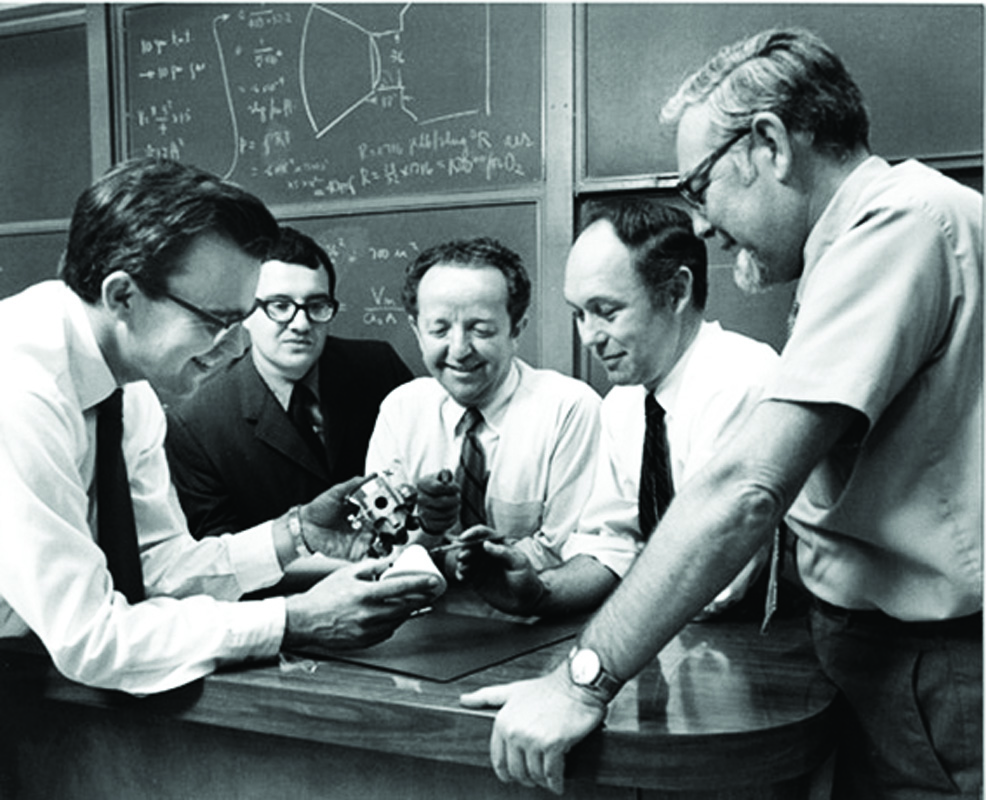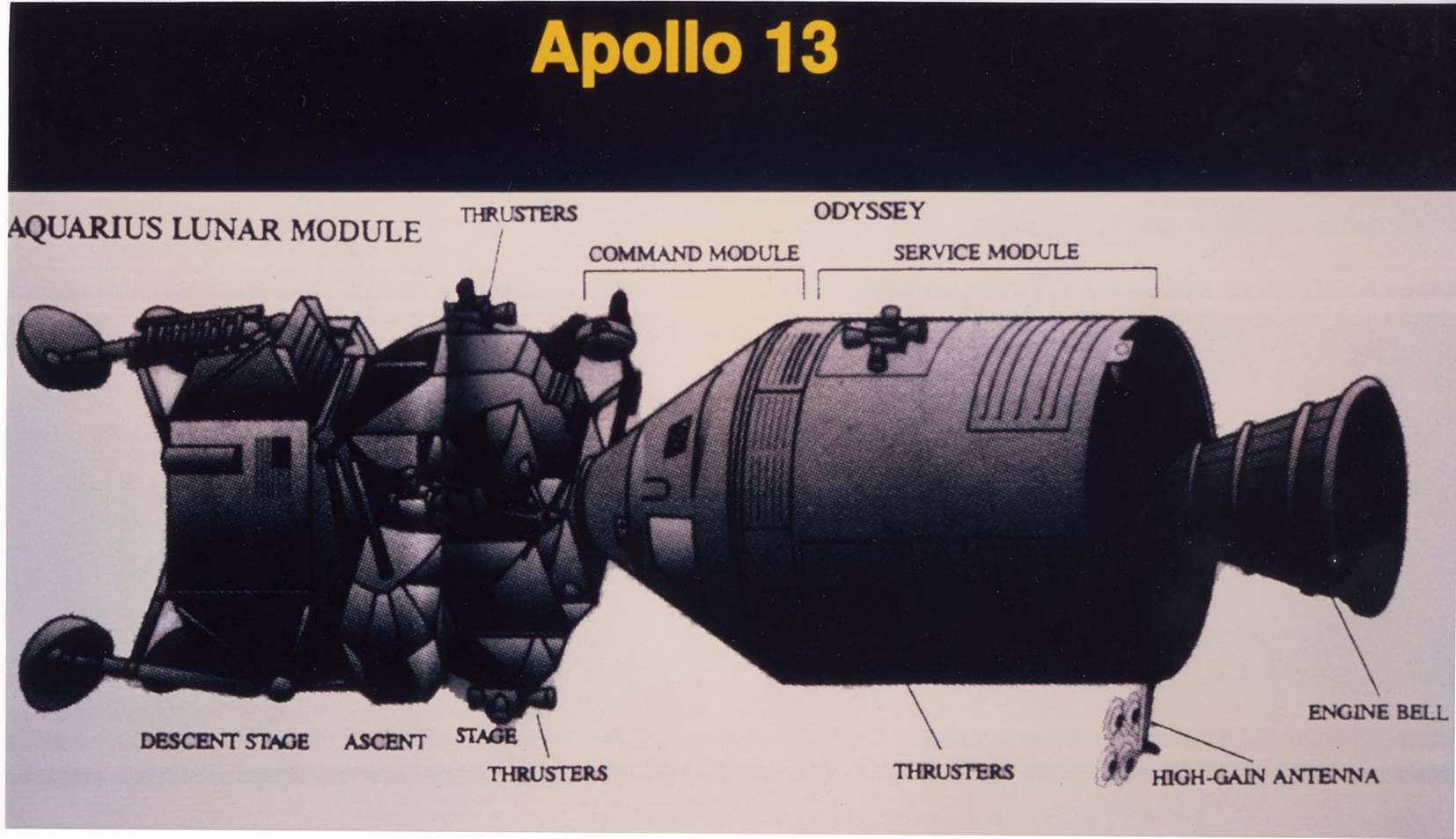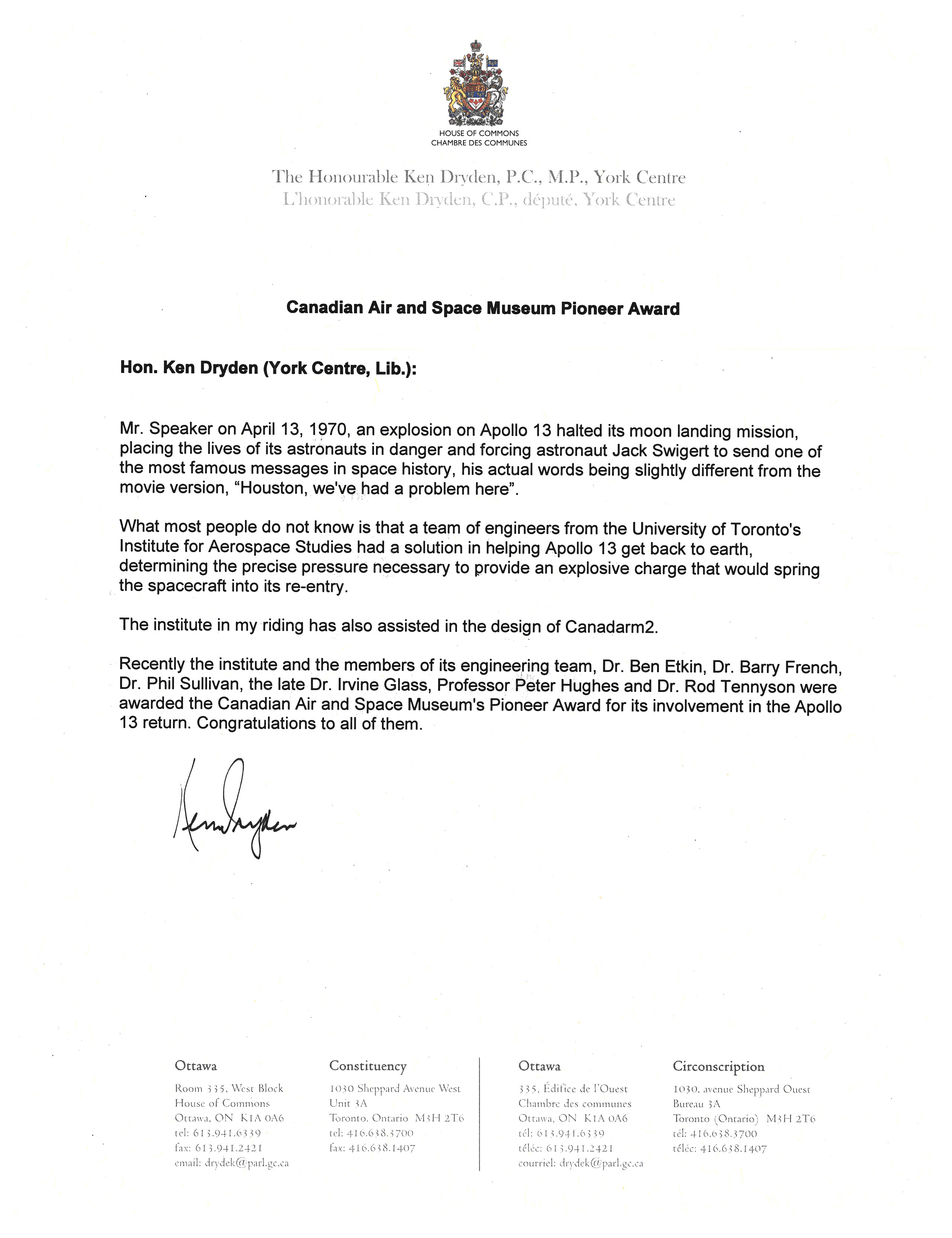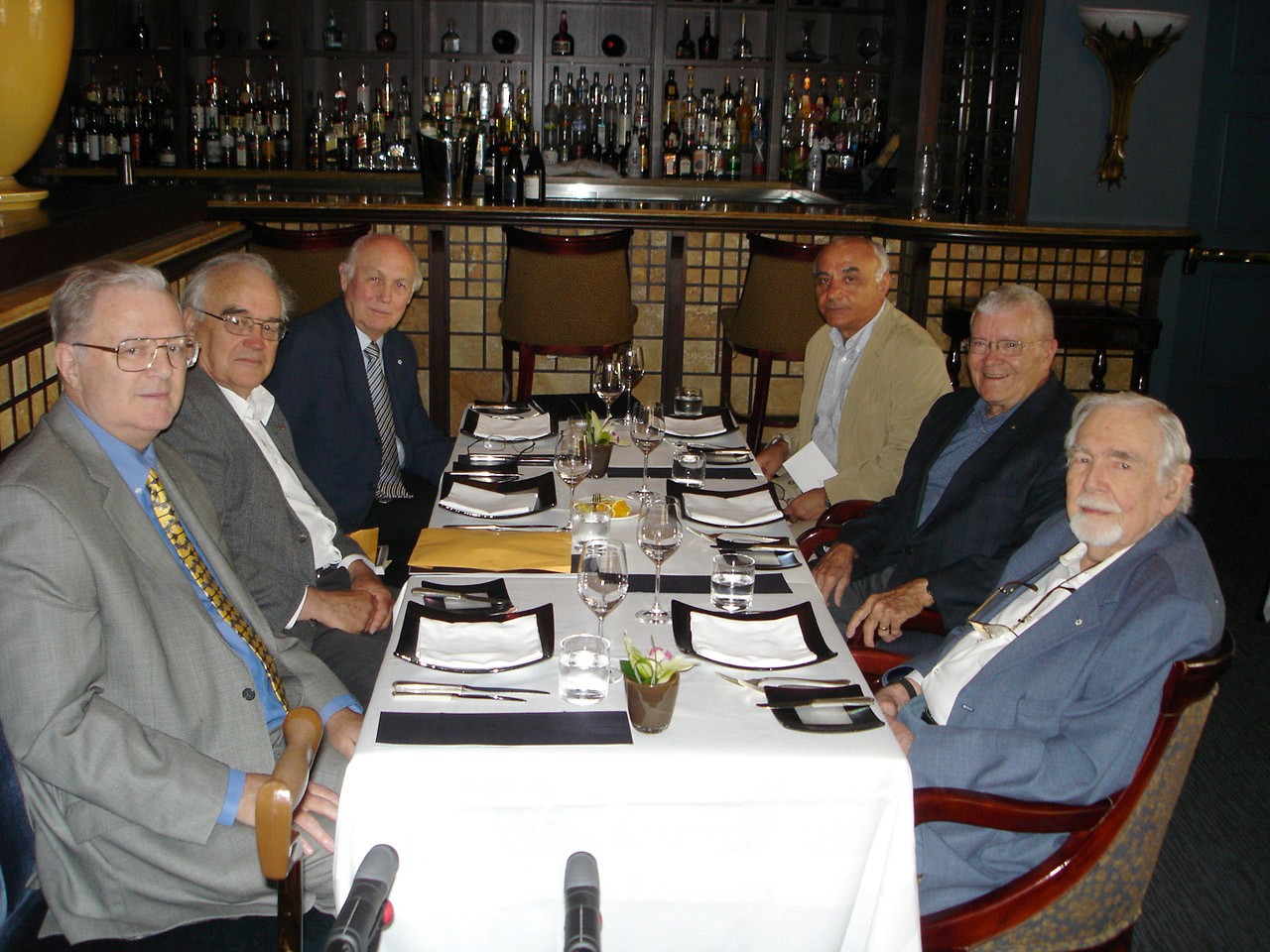By Joan DaCosta

On April 13, 1970, Apollo 13 issued the famous message, “Houston, we’ve had a problem here.” Three days later, on April 16, UTIAS Professor Barry French received a phone call from Richard Oman of Grumman Aerospace, builder of the lunar module (LM), asking for help with the rescue of Apollo 13.
The Apollo craft was comprised of three modules: a service module providing both life support and rocket thrust for most of the voyage, a lunar module (LM) to land on the moon, and a module for both the voyage and terrestrial re-entry. But when an explosion completely disabled the service module, the LM became a lifeboat and the oxygen atmosphere in the tunnel, which would have been evacuated, would now need to be used to jettison the LM before re-entry.
The UTIAS professors were tasked with determining the tunnel pressure that would provide sufficient separation speed to jettison the LM, while minimizing the risk of damage to the re-entry module. Professors Barry French, Irving Glass, Ben Etkin, Phil Sullivan, Rod Tennyson, and Peter Hughes divided themselves into two teams and, armed with slide rulers, a black board, and an open telephone line to Grumman to allow immediate access to data on spacecraft geometry, masses, and other quantities, the teams set to work to determine the optimal psi in the tunnel. The UTIAS calculations were the main basis for a decision to lower the tunnel pressure and thus to complete a successful rescue.

Recognition for the UTIAS team:
On Tuesday, April 13, 2010, the Canadian Air and Space Museum celebrated the 40th anniversary of Apollo 13 by recognizing the little known role that the University of Toronto Institute for Aerospace Studies (UTIAS) played in the safe return of the astronauts. The museum presented a Canadian Air & Space Pioneer award to UTIAS for its contributions.
Fred Haise, the Lunar Module Pilot for Apollo 13, sent a congratulatory message to UTIAS:
Let me join others in congratulations to the University of Toronto Institute for Aerospace Studies as the recipient of this year’s Air & Space Pioneer Award. As the Lunar Module Pilot on Apollo 13, I would certainly vouch for their credentials. Their study and calculations provided a safe means to utilize pressure in the tunnel area between the Command & Service Module (CSM) and the Lunar Module (LM) to assure safe separation of the LM without damaging the hatch. This was another one of the new procedures that had to be implemented on Apollo 13 to assure our safe return. My sincere thanks and congratulations again on your well-deserved award!”
– Fred Haise, Lunar Module Pilot, Apollo 13
And, The Honourable Ken Dryden read a Standing Order 31 in parliament to mark the occasion.

In 2011, Apollo 13 LM pilot Fred Haise visited UTIAS and met with the remaining professors who helped to rescue the three Apollo 13 astronauts.
